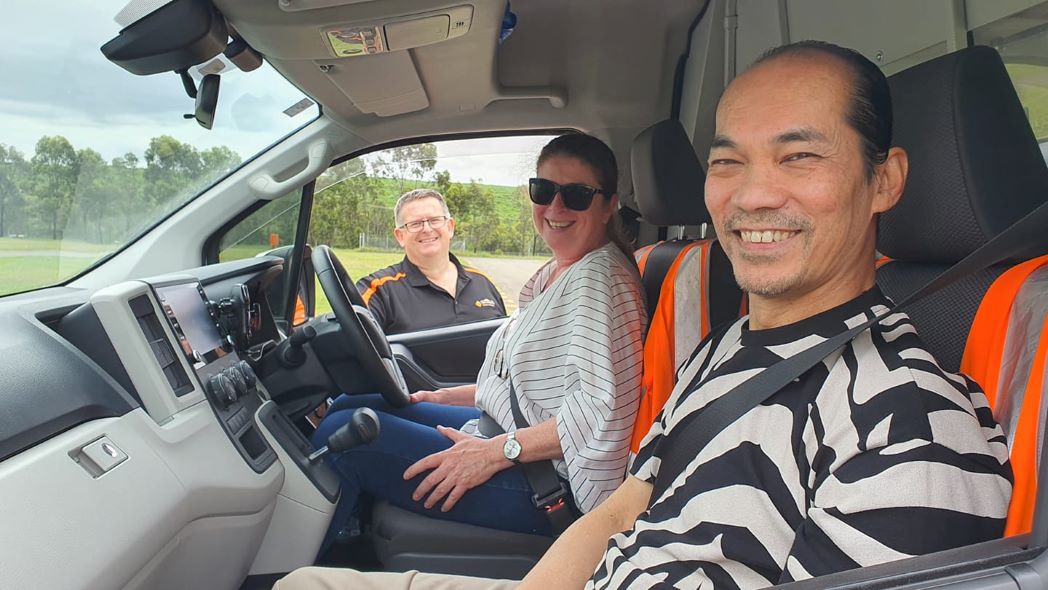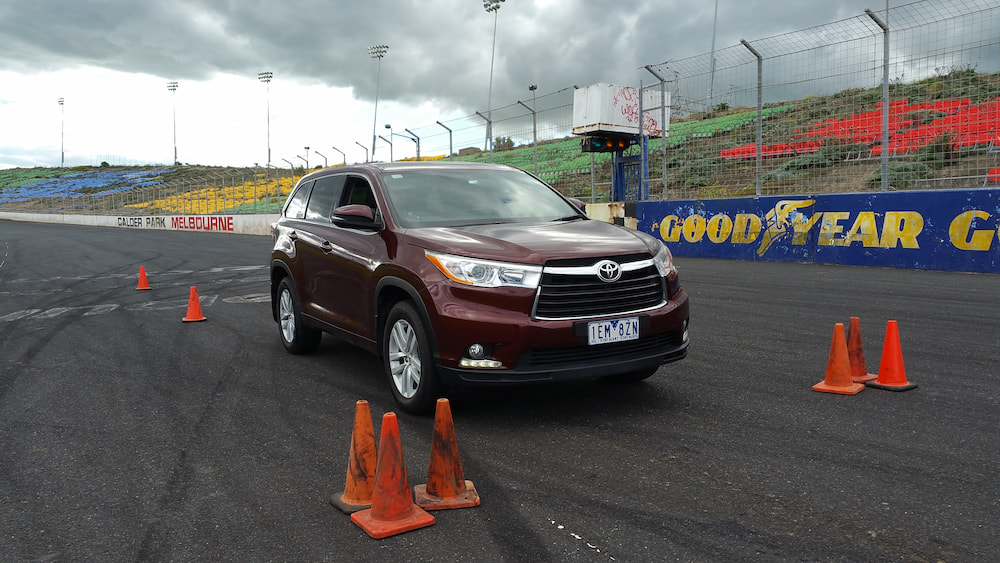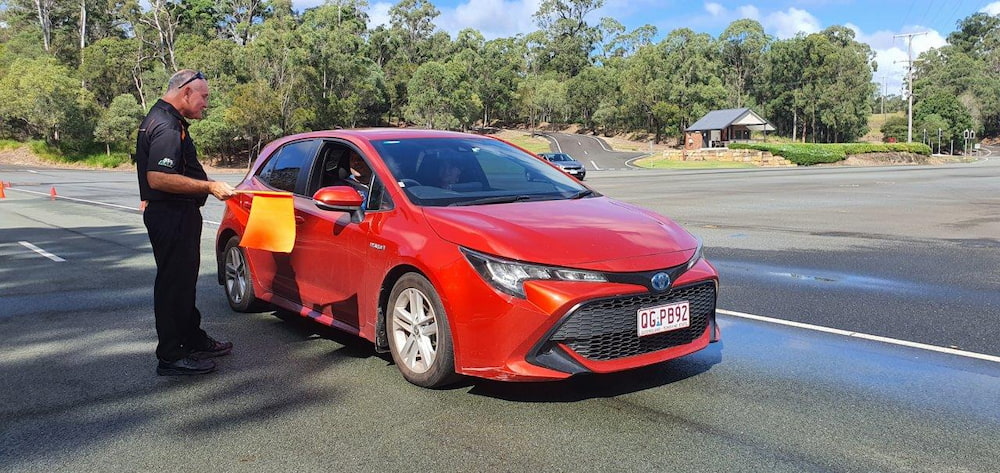On Road – Low Risk Driving
At Performance Driving Australia, we empower you to become a safer driver through our comprehensive On-Road Low-Risk Driving Programs.




At Performance Driving Australia, we’re dedicated to empowering you with the skills needed to become a safer, more confident driver. Our On-Road Low-Risk Driving Programs provide practical, real-world training, focusing on essential low-risk defensive driving skills tailored to your needs. From tactical driving and off-road techniques like gravel navigation to towing, we cover it all.
For those seeking a secure environment to refine their skills, our venue-based Defensive Driver Training offers hands-on practice with emergency braking and hazard avoidance.
Both our on-road and venue-based programs deliver effective, comprehensive training. To build a complete skillset for managing various driving conditions, we encourage combining both programs for the best results.
Key Skills You’ll Gain in Performance Driving Australia's Low-Risk Driving Course
Our training equips you with safe driving strategies, all tailored to enhance your ability to handle diverse road conditions. Explore our range of Low-Risk Driving programs
Driver Assessments for pre-employment or routine checks.
Driver coaching/training offers tips on on-road rules and low-risk driving strategies.
High-Risk Operations support for drivers working in challenging environments.
Gravel Driving expertise.
4WD Operations training.
Towing skills development.

Our On-Road Low-Risk Driving Program Consists Of Three Key Components
- NObservation: We observe your driving in your everyday working environment.
- NCoaching: Our low-risk driving trainers provide hands-on coaching to help you apply defensive and low-risk driving techniques, including emergency stops.
- NAssessment: We assess your driving against our corporate driver standards and provide the results to your employer or supervisor for review.
Additional Course Information
Program Duration
Typically, each program lasts 30-90 minutes per driver.
Who Can Take This Course
Our on-road training is suitable for all drivers and vehicle types.
For a comprehensive training solution, many organisations choose to combine our Defensive Driving course with our On-Road Low-Risk Driving Program.
Get in touch with us today to learn more about our programs and enhance your driving skills.
These Are Some Of The Primary Factors Contributing To Road Crashes In Australia, Highlighting The Importance Of Safe Driving
Speeding
Driving above the speed limit or too fast for road conditions greatly increases the risk of accidents.
Driver Distraction
Activities such as using mobile phones, eating, or adjusting controls while driving can divert attention from the road and lead to collisions.
Alcohol and Drug Impairment
Driving under the influence of alcohol or drugs impairs judgment, coordination, and reaction times, significantly increasing the likelihood of crashes.
Fatigue
Driver fatigue can impair concentration and reaction times, leading to lapses in judgment and an increased risk of accidents, especially during long journeys.
Reckless Driving
Aggressive driving behaviours such as tailgating, weaving in and out of traffic, and disregarding traffic signals contribute to accidents on Australian roads.
Poor Weather Conditions
Rain, fog, and other adverse weather conditions reduce visibility and traction, making it more challenging to control vehicles and increasing the likelihood of accidents.
Failure to Obey Traffic Laws
Ignoring traffic signs, signals, and road rules, such as failure to give way or stop at intersections, can result in collisions.
Driver Inexperience
Inexperienced drivers may lack the skills and confidence to handle unexpected situations on the road, increasing their vulnerability to accidents.
Vehicle Defects
If vehicles are not properly maintained, mechanical failures such as brake failures, tire blowouts, or steering problems can lead to loss of control and accidents.
Poor Road Conditions
Potholes, uneven surfaces, inadequate signage, and poorly designed roads can contribute to accidents, particularly if drivers are caught off guard or unable to navigate safely.
Our Corporate Clients
We are proud to work with various government departments, large corporations, and industry leaders. Our clients trust us to provide high-quality defensive driving programs that keep their driver employees safe and compliant with WHS regulations. Here are a few of the organisations we have worked with:



Book On Road – Low Risk Driving Course
Contact us today to explore the world of Low Risk Driving like never before!
FAQs
What is low-risk driving?
Low-risk driving focuses on minimising hazards on the road by using defensive driving techniques and safe driving practices. It involves strategies like speed management, crash avoidance space, and hazard perception. A low-risk driver actively anticipates potential dangers, maintains the three-second gap, and adapts to changing road conditions to ensure a safer driving experience for all road users.
Why should I take a low-risk driving course?
A low-risk driving course helps you develop essential driving skills to navigate complex road conditions confidently. This course covers strategies such as anticipating hazards, managing speed, and maintaining crash avoidance space. These techniques reduce the risk of accidents, especially in adverse driving conditions, for both personal safety and professional development in high-risk environments.
How is low-risk driving different from regular defensive driving?
While both focus on safe driving practices, low-risk driving emphasises strategies that proactively minimise potential hazards. Defensive driving often involves reactive techniques, while low-risk driving promotes anticipation and awareness to prevent dangerous situations.
What skills will I gain from a low-risk driving course?
You’ll learn essential skills like defensive driving techniques, hazard perception, speed management, and blind spot awareness. Our low-risk driver training focuses on practical strategies, such as anticipating other road users’ actions, managing crash avoidance space, and adjusting to sudden changes in road conditions.
Who can benefit from a low-risk driving course?
Corporate drivers, frequent travellers and those operating in high-risk environments benefit significantly from low-risk driving training. Experienced drivers in logistics, fleet operations, and other demanding roles can also gain vital skills that promote road safety.
